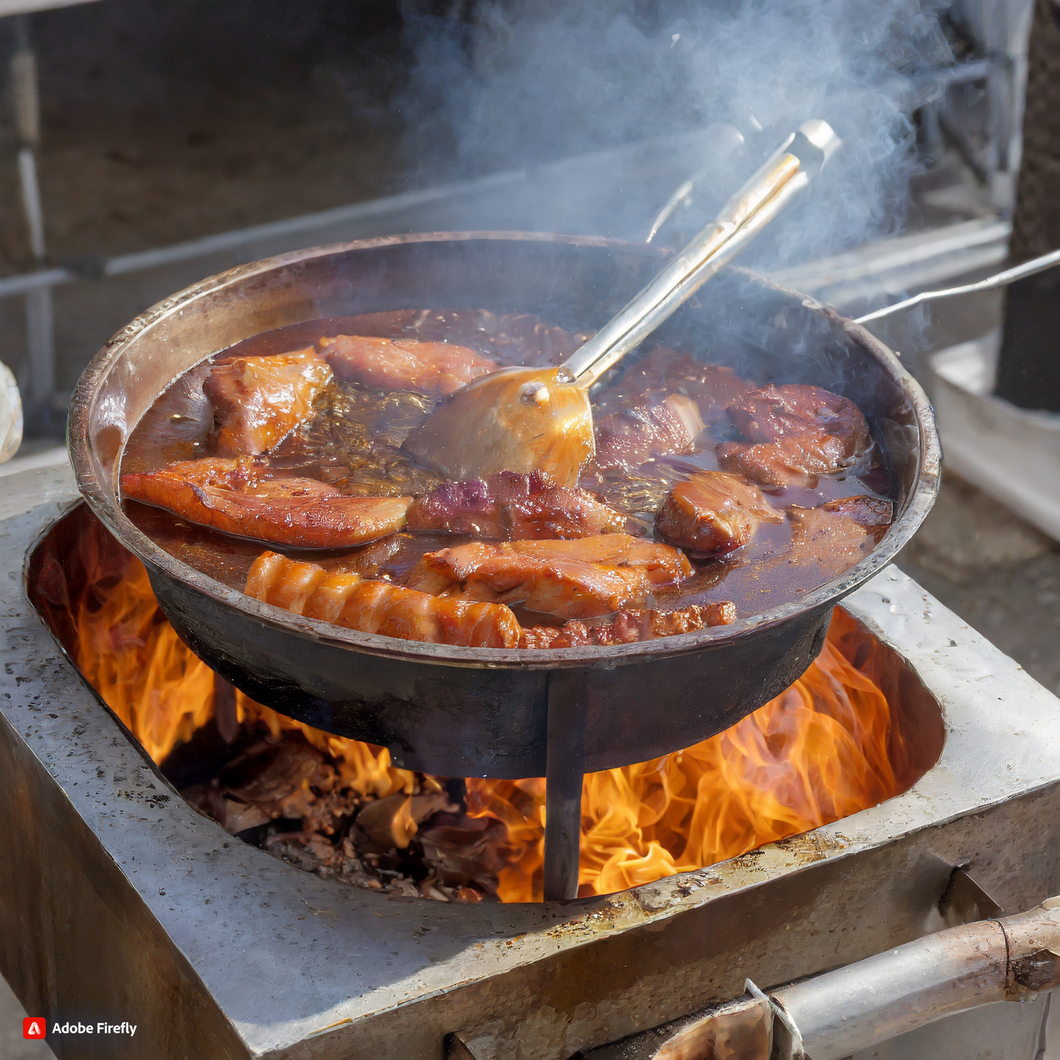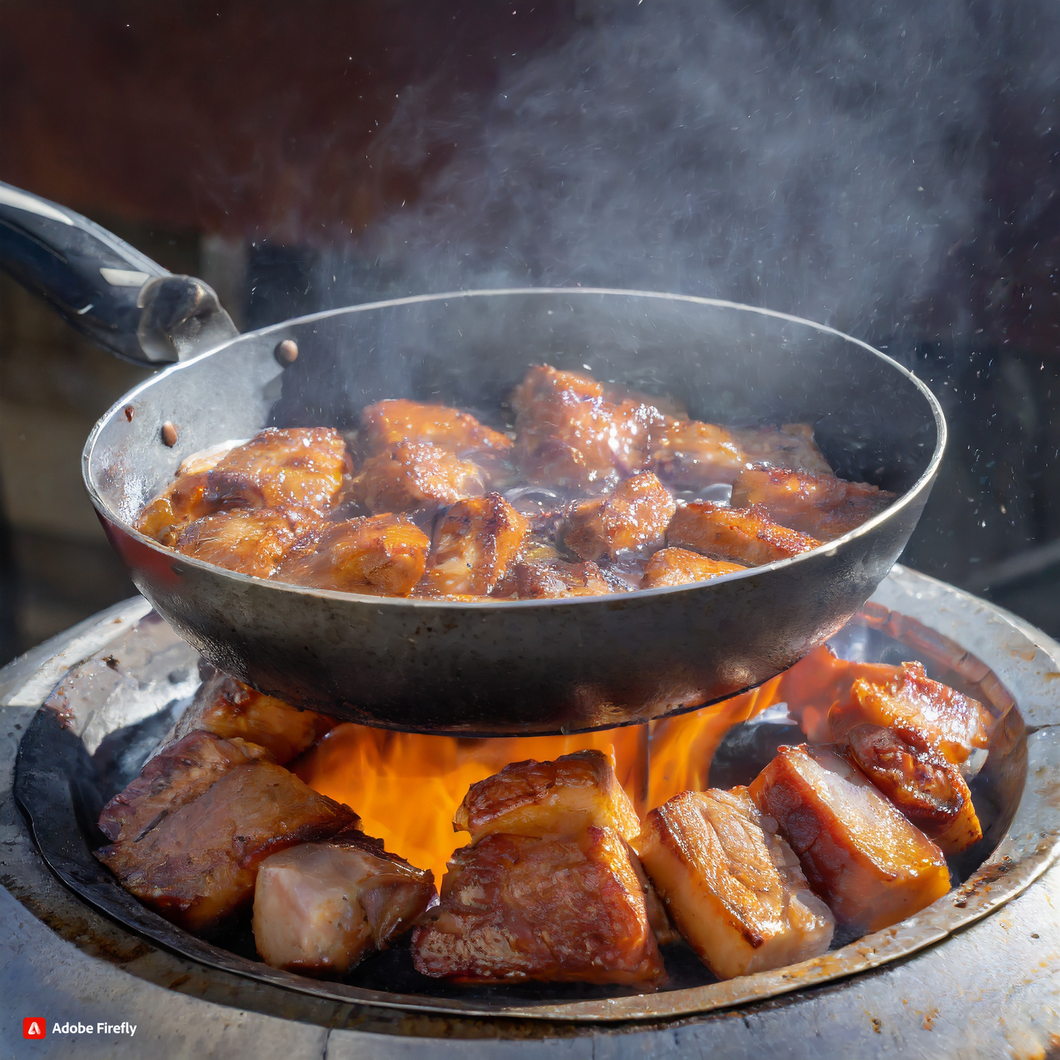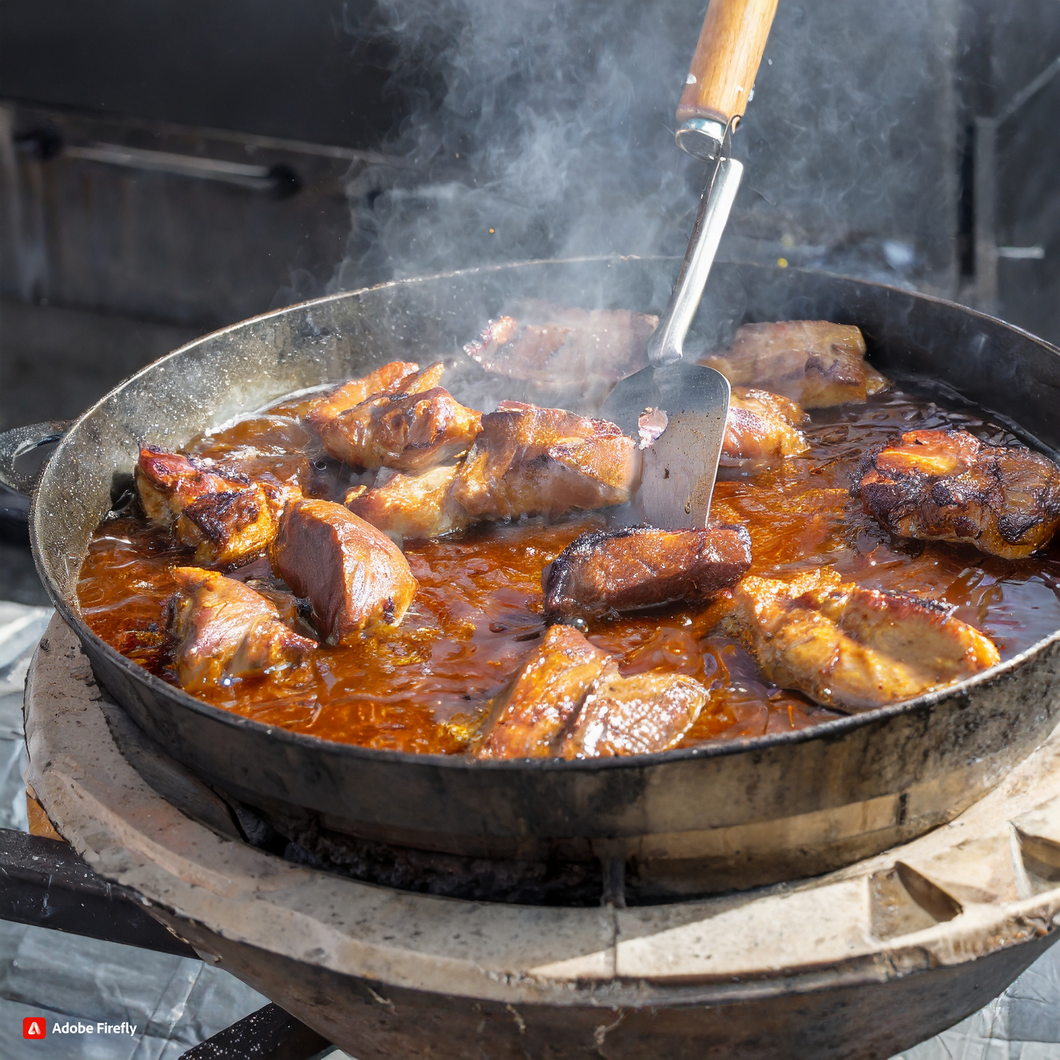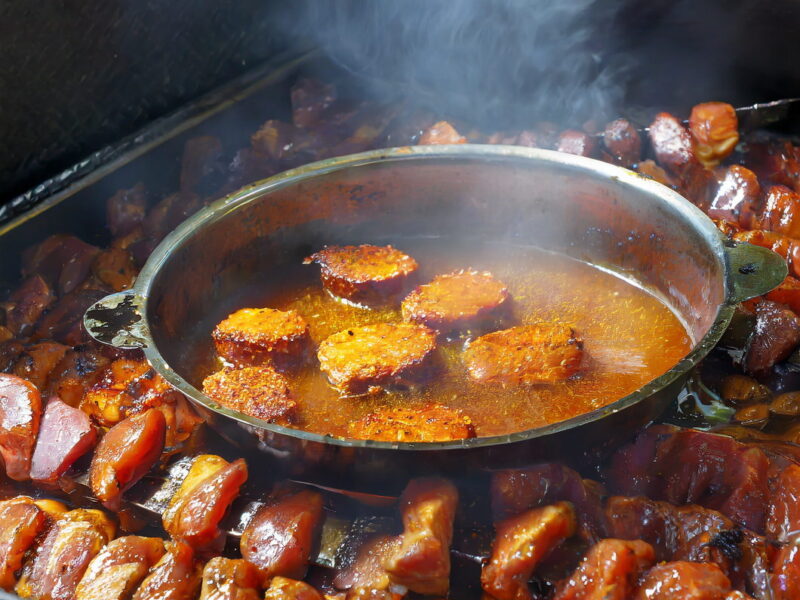Introduction
Maillard Reaction Cooking Meats, The Maillard Reaction is a chemical reaction that occurs when cooking meats at high temperatures. It is responsible for the browning and flavor development in cooked meats, giving them a desirable taste and texture. This reaction is named after French chemist Louis-Camille Maillard, who first described it in the early 1900s. Understanding the Maillard Reaction is crucial for achieving perfectly cooked and flavorful meats in the culinary world.
The Science Behind the Maillard Reaction in Cooking Meats
Have you ever wondered why your steak turns brown and develops a delicious crust when cooked? Or why the smell of sizzling bacon is so irresistible? The answer lies in a chemical reaction called the Maillard reaction. This reaction is responsible for the browning and flavor development in cooked meats, and understanding it can take your cooking skills to the next level.
The Maillard reaction was first described by French chemist Louis-Camille Maillard in 1912. It is a non-enzymatic reaction that occurs between amino acids (found in proteins) and reducing sugars (such as glucose and fructose) when exposed to high heat. This reaction is what gives cooked meats their characteristic brown color, crispy texture, and mouth-watering aroma.

So, how does the Maillard reaction work? When meat is heated, the high temperature causes the amino acids and sugars to undergo a series of complex chemical reactions. This results in the formation of new compounds, including melanoidins, which give cooked meats their brown color. These compounds also contribute to the rich, savory flavor of cooked meats.
The Maillard reaction is not limited to just meats; it also occurs in other foods such as bread, coffee, and roasted vegetables. However, it is most prominent in meats due to their high protein content. The type and amount of amino acids present in the meat, as well as the cooking temperature and time, all play a role in the Maillard reaction.
One of the key factors in the Maillard reaction is the temperature at which the meat is cooked. The reaction occurs most rapidly at temperatures between 140-165°C (284-329°F). This is why meats cooked at high temperatures, such as grilling or roasting, develop a deep brown color and intense flavor. On the other hand, meats cooked at lower temperatures, such as braising or stewing, will have a less pronounced Maillard reaction and a lighter color.
Another important factor is the type of amino acids present in the meat. Different types of amino acids will produce different flavors and aromas during the Maillard reaction. For example, the amino acid cysteine produces a savory, meaty flavor, while the amino acid serine produces a sweet, nutty flavor. This is why different types of meats, such as beef, pork, and chicken, have distinct flavors when cooked.
The Maillard reaction also plays a role in the texture of cooked meats. As the reaction progresses, the surface of the meat becomes dehydrated, resulting in a crispy crust. This is why a well-seared steak has a crispy exterior and a juicy interior. The Maillard reaction also breaks down the proteins in the meat, making it more tender and easier to chew.
Now that you understand the science behind the Maillard reaction, you can use this knowledge to elevate your cooking. Here are a few tips to help you achieve the perfect Maillard reaction in your meats:
1. Start with dry meat: Moisture on the surface of the meat can hinder the Maillard reaction. Make sure to pat your meat dry before cooking.
2. Use high heat: As mentioned earlier, the Maillard reaction occurs most rapidly at high temperatures. Use methods such as grilling, roasting, or searing to achieve a deep brown color and intense flavor.
3. Don’t overcrowd the pan: When cooking meats, make sure to leave enough space between each piece. Overcrowding the pan can lower the cooking temperature and prevent the Maillard reaction from occurring.
4. Add a pinch of sugar: Adding a small amount of sugar to your marinade or rub can help enhance the Maillard reaction and add a touch of sweetness to your meat.
In conclusion, the Maillard reaction is a crucial process in cooking meats that results in the delicious flavors and aromas we all love. By understanding the science behind it, you can take your cooking skills to the next level and impress your friends and family with perfectly cooked meats every time. So, the next time you’re enjoying a juicy steak or crispy bacon, remember to thank the Maillard reaction for its role in making it so delicious.
How to Achieve the Perfect Maillard Reaction in Your Meat Dishes
Have you ever wondered why a perfectly cooked steak has that irresistible golden-brown crust on the outside? Or why a juicy burger has those beautiful grill marks? The answer lies in the Maillard reaction, a chemical process that occurs when cooking meats at high temperatures. In this article, we will explore what the Maillard reaction is and how you can achieve the perfect Maillard reaction in your meat dishes.

First, let’s understand what the Maillard reaction is. Named after French chemist Louis-Camille Maillard, this reaction is a chemical process that occurs between amino acids and reducing sugars in food when exposed to high heat. It is responsible for the browning and flavor development in cooked meats, as well as other foods like bread, coffee, and chocolate.
So, how does the Maillard reaction work? When meat is cooked at high temperatures, the heat causes the amino acids and reducing sugars to react and form new compounds. These compounds give the meat its characteristic brown color and delicious flavor. The longer the meat is exposed to heat, the more intense the Maillard reaction becomes, resulting in a deeper color and richer flavor.
Now that we know what the Maillard reaction is, let’s talk about how to achieve the perfect Maillard reaction in your meat dishes. The key to achieving this reaction is to have the right combination of heat, time, and moisture.
First and foremost, you need to make sure that your meat is dry before cooking. Any excess moisture on the surface of the meat will prevent the Maillard reaction from occurring. Pat your meat dry with a paper towel before cooking to ensure a crispy and flavorful crust.
Next, you need to use high heat. The Maillard reaction occurs at temperatures above 300°F, so it’s essential to cook your meat at a high temperature. This can be achieved by grilling, searing, or broiling your meat. The intense heat will help caramelize the surface of the meat, resulting in that beautiful golden-brown crust.
Another crucial factor in achieving the perfect Maillard reaction is giving your meat enough time to cook. The longer the meat is exposed to heat, the more time the Maillard reaction has to occur. However, be careful not to overcook your meat, as it can result in a burnt and bitter flavor. Use a meat thermometer to ensure that your meat is cooked to the desired doneness.
Lastly, it’s essential to have some moisture present during the cooking process. This may seem counterintuitive, as we just mentioned that excess moisture can prevent the Maillard reaction. However, a small amount of moisture, such as oil or butter, can help conduct heat and aid in the browning process. It also adds flavor and helps prevent the meat from drying out.
In addition to these key factors, there are a few other tips to keep in mind when trying to achieve the perfect Maillard reaction. For example, avoid overcrowding your pan or grill when cooking meat. This can cause the meat to steam instead of sear, preventing the Maillard reaction from occurring. Also, make sure to season your meat before cooking. Salt, in particular, can help draw out moisture and enhance the Maillard reaction.
In conclusion, the Maillard reaction is a crucial process in cooking meats that results in a deliciously browned and flavorful crust. By following these tips and understanding the science behind it, you can achieve the perfect Maillard reaction in your meat dishes. So, the next time you cook a steak or burger, remember to keep these factors in mind and watch as your meat transforms into a mouthwatering masterpiece. Happy cooking!
Exploring the Flavor and Texture Enhancing Effects of the Maillard Reaction in Meat Cooking
Have you ever wondered why a perfectly cooked steak has that irresistible aroma and mouth-watering flavor? Or why a seared chicken breast has a crispy, golden-brown crust? The answer lies in a chemical reaction that occurs when meat is cooked at high temperatures – the Maillard reaction.
The Maillard reaction, named after French chemist Louis-Camille Maillard, is a non-enzymatic browning process that takes place between amino acids and reducing sugars in food. In simpler terms, it is the reaction between proteins and carbohydrates when exposed to heat. This reaction is responsible for the delicious flavors and textures in cooked meats.

When meat is heated, the proteins and sugars on its surface undergo a series of complex chemical reactions. The high heat causes the amino acids in the proteins to break down and combine with the sugars, forming new compounds that give meat its characteristic flavor and color. These compounds are responsible for the savory, nutty, and slightly sweet flavors that we associate with well-cooked meats.
The Maillard reaction is not limited to just meat; it also occurs in other foods such as bread, coffee, and roasted vegetables. However, it is most prominent in meat due to its high protein content. The reaction starts to occur at around 140°C (284°F) and continues until the surface of the meat reaches a temperature of around 165°C (329°F). This is why meats that are cooked at high temperatures, such as grilling or roasting, have a more pronounced Maillard reaction.
Apart from adding flavor, the Maillard reaction also plays a crucial role in the texture of cooked meats. As the proteins and sugars react, they form a thin layer on the surface of the meat, creating a crispy crust. This crust not only adds a pleasant crunch but also helps to seal in the juices, keeping the meat moist and tender.
The Maillard reaction is not a one-time event; it continues to occur as long as the meat is exposed to heat. This is why it is essential to let meat rest after cooking. Resting allows the meat to cool down slightly, which halts the Maillard reaction and prevents the meat from becoming overcooked and dry. Read Recipes Weight Loss Salads.
While the Maillard reaction is a natural process, there are ways to enhance it and achieve even more flavorful and tender meats. One way is by using a marinade or dry rub before cooking. Marinades and rubs often contain ingredients such as soy sauce, Worcestershire sauce, or brown sugar, which are rich in amino acids and sugars, thus promoting the Maillard reaction.
Another way to enhance the Maillard reaction is by using a cooking method that exposes the meat to high heat for a short period. Grilling, broiling, and searing are all excellent methods for achieving a deep Maillard reaction. However, it is essential to monitor the cooking time carefully to avoid burning the meat.
In conclusion, the Maillard reaction is a crucial process in cooking meats that adds flavor and texture to our favorite dishes. It is a result of the complex chemical reactions between proteins and sugars when exposed to high heat. By understanding and utilizing this reaction, we can elevate our cooking and create delicious, mouth-watering meats that are sure to impress. So the next time you enjoy a perfectly cooked steak or a crispy chicken breast, remember to thank the Maillard reaction for its role in making it so delicious.
Q&A – Maillard Reaction Cooking Meats
1. What is the Maillard Reaction?
The Maillard Reaction is a chemical reaction that occurs when proteins and sugars are heated together, resulting in the browning and flavor development of foods, particularly meats.
2. How does the Maillard Reaction affect the taste of cooked meats?
The Maillard Reaction creates new flavor compounds that give cooked meats a rich, savory, and complex taste. It also produces the desirable crispy texture on the surface of meats.
3. Are there any other benefits of the Maillard Reaction in cooking meats?
Aside from enhancing the flavor and texture of meats, the Maillard Reaction also helps to kill harmful bacteria and pathogens, making the meat safer to consume. It also helps to retain moisture in the meat, resulting in juicier and more tender cuts.
Conclusion for Maillard Reaction Cooking Meats
In conclusion, the Maillard Reaction is a chemical reaction that occurs when cooking meats at high temperatures. It results in the browning and flavor development of the meat, making it more delicious and visually appealing. This reaction is essential in creating the desired taste and texture of cooked meats and is a crucial aspect of cooking techniques. Understanding the Maillard Reaction can greatly enhance one’s cooking skills and lead to more flavorful and enjoyable meals.
Please follow us on linkedin. You can learn all best canadian food recipes you can check our Culinary 1TouchFood Youtube and Telegram 1TouchFood page. Don’t forget Fighting Obesity Magazine and Radio Cooking.

